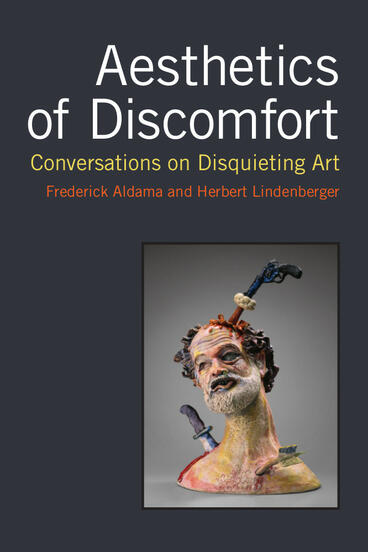Aesthetics of Discomfort
Conversations on Disquieting Art
Describes and defends the centrality of discomfort for consumers of various arts—literature, architecture, visual art, music, dance, and cinema
Description
Through a series of provocative conversations, Frederick Luis Aldama and Herbert Lindenberger, who have written widely on literature, film, music, and art, locate a place for the discomforting and the often painfully unpleasant within aesthetics. The conversational format allows them to travel informally across many centuries and many art forms. They have much to tell one another about the arts since the advent of modernism soon after 1900—the nontonal music, for example, of the Second Vienna School, the chance-directed music and dance of John Cage and Merce Cunningham, the in-your-faceness of such diverse visual artists as Francis Bacon, Pablo Picasso, Willem de Kooning, Egon Schiele, Otto Dix, and Damien Hirst. They demonstrate as well a long tradition of discomforting art stretching back many centuries, for example, in the Last Judgments of innumerable Renaissance painters, in Goya’s so-called “black” paintings, in Wagner’s Tristan chord, and in the subtexts of Shakespearean works such as King Lear and Othello. This book is addressed at once to scholars of literature, art history, musicology, and cinema. Although its conversational format eschews the standard conventions of scholarly argument, it provides original insights both into particular art forms and into individual works within these forms. Among other matters, it demonstrates how recent work in neuroscience may provide insights in the ways that consumers process difficult and discomforting works of art. The book also contributes to current aesthetic theory by charting the dialogue that goes on—especially in aesthetically challenging works—between creator, artifact, and consumer.
Frederick Luis Aldama is Arts and Humanities Distinguished Professor of English at The Ohio State University.
Herbert Lindenberger is Avalon Foundation Professor of Humanities, Emeritus, Stanford University.
Reviews
“In this ambitious and wide-ranging study, Aldama and Lindenberger put under the lamp a vast array of material from music, film, painting, and other arts to show us that only work that rearranges our perceptions of reality, that questions the many assumptions we operate under, and challenges us to view things in an entirely different fashion—in short, to directly question what we think we know—has anything real to teach us. An essential read.”
— Wheeler Winston Dixon, University of Nebraska, and author of A History of Horror and Black & White Cinema: A Short History
“Lindenberger and Aldama treat their readers to fresh perspectives on familiar, if disquieting, places.”
— Kay Bea Jones, The Ohio State University

